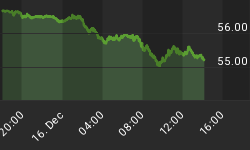Ever since the December 2006 price high was made in the short term for the nearby coffee futures, the price of coffee has fallen a steady 23.5 % to 103.25. And, as I wrote back in March 2007, A Head & Shoulders Reversal Top was 'within striking distance of being met', and I asked the question,'Will we meet the objective?'. Well, the answer is yes, we met the May Futures price of 108.3 and the July Futures price of 111.95 as well. With that said, if you would turn to Chart #1, notice how the weakness in coffee has carved out a well defined price channel, displaying a series of lower and lower lows and lower and lower highs, the definition of a price trend. If you look closer at the chart above, notice that this Trend-Channel has been intact for more than 21 weeks, denying all rally attempts thus far.

Question: Could the rally up from the May 1st short term low shown in Chart #1, eventually become an intermediate term rally? And if so, what would be a possible catalyst? Well, if you look to Chart # 2, notice that the upper boundary line of the Channel has been penetrated, and that I have labeled a Head & Shoulders Bottom with an upside price target of 114.05 per the July Futures. This bullish price is just above another potential neckline at 114.00, of second and larger Head & Shoulders Bottom. So, with the high so far at 113.50 combined with the weakness implied with the Key Reversal we had on Friday, any pullback we get, could form the fifth and final point necessary for a larger Right Shoulder. If this should happen, could support play a roll in managing price weakness. And if so, how low would price have to travel before finding support?

Well, the first level of support is at the 'fail-safe-trend-line' shown above in Chart # 2. This is a traders support line, and if the price objective of 114.05 has not been met, and price starts to dip into this line, this is a warning to start looking to take cover. The next line of support is the neckline below the price. This line slopes up at an angle to meet tomorrows price bar at 109.50. If this support line is tested and holds, a possible right shoulder for a larger and more bullish H&S Bottom could then form like I said above. With that being said, what about the internal characteristics of volume and open interest?

Looking at Chart #3, notice that the chart displays a total of seven well defined price rally's that shows whether each price bounce was on net short covering or not. For instance, the first rally in December was not on short covering, but was representative of traders adding to their long positions. When the price started to go lower, any traders 'caught' long were forced to 'cover', and this provided the 'fuel' necessary to establish a new lower low. Once this new low was made, the next rally starts, and traders begin to cover or add to their positions. As the the process continues, sooner or later a catalyst will upset the balance and a new trend will commence. In this particular case, when looking at the July Futures, the May 1st low in price to the May 18th high, had a Open Interest increase of 13,672 contracts. And, when comparing this OI gain to the other six rally's, the seventh rally in May had more than twice as much OI gain percentage-wise and in nominal terms than to all the others. So, could this have been the catalyst needed to change the short-term trend in coffee futures? Maybe. Or, could it be a combination of factors, like A Fibonacci Turn Date of 21 Weeks on May 4th,... or the Seventh Rally in a Downward Price Channel,...or, maybe it was the Lower Boundary line of an Intermediate Term Price Pattern that acted as major support? We will see!
















